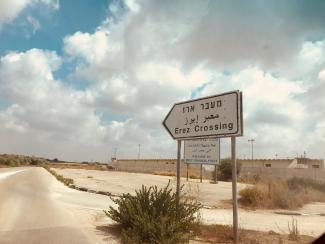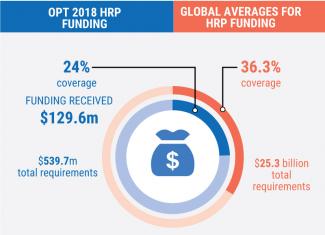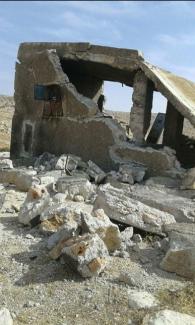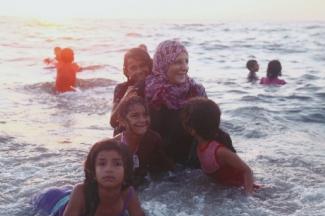In recent months, citing security concerns, the Israeli authorities, and to a lesser extent Hamas, have tightened restrictions on the movement of Palestinian humanitarian staff out of Gaza. Measures by the Israeli authorities include an increase in the processing time for exit permits, a rise in denials and one-year bans, restrictions on the type of items allowed to be taken out of Gaza, and new crossing procedures at the vehicle terminal. The Hamas authorities have established a new registration point at the entrance to Gaza. These measures have increased uncertainty, delays and logistical impediments, and have a negative impact on humanitarian operations. The UN continues to conduct negotiations with all relevant actors in Israel and Gaza to alleviate these challenges.
The Monthly Humanitarian Bulletin | July 2018
Israel’s blockade on Gaza tightened: further import restrictions, a suspension of exports, and a reduction of the accessible fishing area. The 2018 Humanitarian Response Plan is only 24 per cent funded, an all-time low, forcing agencies to scale down interventions. Over 100 million litres of poorly-treated sewage discharged into the sea every day, posing serious health and environmental hazards for Gaza’s population. Herding communities in, or next to, a “firing zone” in eastern Nablus governorate face an increasingly coercive environment due to various Israeli practices.
In this document
Funding for humanitarian activities is at an all-time low this year for the occupied Palestinian territory (oPt). At the end of July, the 2018 Humanitarian Response Plan (HRP) requirements were only 24 per cent funded; this is a significantly lower level of funding compared with the same period over the past eight years. Humanitarian financing to the oPt has typically fluctuated in response to significant shifts in the context, with notable peaks in financial contributions in response to active hostilities in Gaza. Following the last escalation of hostilities in 2014, humanitarian financing to the oPt has been gradually, but definitively, decreasing year on year.
Recent developments have exacerbated the vulnerability of Palestinians living in, or dependent on access to, an area in eastern Nablus governorate designated in the 1970s as closed for Israeli military training: “Firing Zone 904A”. These developments have included military exercises involving temporary displacement, property damage, disruption to life and new access restrictions. In recent years this area has witnessed increasing settlement activities, including violence and intimidation, alongside a reduced Palestinian presence.
The immense electricity deficit affecting the Gaza Strip, alongside the longstanding shortage of adequate sanitation infrastructure, continues to result in the discharge of 100-108 million litres of poorly treated sewage into the sea every day. This situation poses serious health and environmental hazards, particularly during the summer when swimming in the sea is one of the few recreational activities available to the population of Gaza. According to WHO, water-related diseases are estimated to account for over one-fourth of illnesses and are the primary cause of child morbidity in the Gaza Strip. The current operation of wastewater treatment plants may be undermined further in the near future due to the funding gaps facing the UN programme of emergency fuel to run backup generators at critical facilities, as well as the recent tightening of the blockade.
In July, Israel tightened its longstanding blockade on the Gaza Strip, worsening the already desperate humanitarian situation. Measures adopted by the Israeli authorities included restricting imports to mainly food and medicine; a complete halt to the exit of all goods; and a reduction of the fishing area from six to three nautical miles from Gaza’s coast. The entry of fuel and cooking gas was also suspended during July for over one week, and again since 2 August (ongoing as of the time of writing). By the end of the month, the Palestinian Federation of Industries in Gaza indicated that over 4,000 workers in the construction sector had been temporarily laid off, primarily due to the shortage of construction materials.














